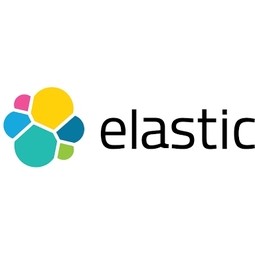Download PDF
InfoTrack: Enhancing Data-Driven Innovation with Elasticsearch Service

Technology Category
- Application Infrastructure & Middleware - Event-Driven Application
- Platform as a Service (PaaS) - Application Development Platforms
Applicable Industries
- Buildings
- National Security & Defense
Applicable Functions
- Procurement
- Product Research & Development
Use Cases
- Tamper Detection
- Time Sensitive Networking
Services
- Cloud Planning, Design & Implementation Services
- System Integration
The Challenge
InfoTrack, a legal technology company, was facing challenges in managing its IT system log data and legal document data for its customers. The company was initially using Amazon Elasticsearch Service, but it ran into security and performance issues. The version of the Elastic Stack used by Amazon Elasticsearch Service only allowed security using IP restriction and restricted developers from tuning the underlying Java Virtual Machine (JVM). Additionally, InfoTrack lacked access to additional features of the Stack, including APM, Index Lifecycle Management (ILM), and Graph. This limited their potential in architecting their system for long-term success and stability, and ensuring they were getting the most value out of the data available to them. Furthermore, the company was struggling with manual logging, which became too time-consuming as InfoTrack grew and didn’t allow developers to trace and debug applications.
The Customer
InfoTrack
About The Customer
InfoTrack is a legal technology company that helps customers, including law firms, financial institutions, real estate companies, and government entities, to find, analyze, organize, and communicate information required for property or business transactions. This information includes government data related to properties and businesses as well as individual background information like police checks. InfoTrack’s platform makes all of this information searchable in one central place, revolutionizing workflow so that customers can improve productivity and grow profitability. InfoTrack has become a dominant player in its core markets and currently has 8,500 customers across Australia, United States, and the United Kingdom, and is growing at a rate of 150 new customers per month.
The Solution
InfoTrack decided to switch from Amazon’s Elasticsearch Service to Elasticsearch Service on Elastic Cloud. This switch provided InfoTrack with greater flexibility to spin up new clusters and more robust, role-based security controls. The migration was effortless and gave InfoTrack access to the latest version of the Elastic Stack and a wider set of capabilities. InfoTrack is now using Filebeat and Metricbeat to ship data from thousands of applications into Logstash where it is transformed into a readable format. The data can then be searched and visualized in real time using Elasticsearch and Kibana. The Elasticsearch Service also provided greater flexibility when it came to hooking into different data streams and managing index life cycle. InfoTrack also used the Elastic Stack to design a new pyramid-shaped ‘product story’ which revolutionized searching on its platform. The company is now in the process of tagging the metadata of all 55+ million document orders on InfoTrack’s platform to provide a smarter and faster search mechanism across its products.
Operational Impact
Quantitative Benefit
Related Case Studies.

Case Study
Energy Saving & Power Monitoring System
Recently a university in Taiwan was experiencing dramatic power usage increases due to its growing number of campus buildings and students. Aiming to analyze their power consumption and increase their power efficiency across 52 buildings, the university wanted to build a power management system utilizing web-based hardware and software. With these goals in mind, they contacted Advantech to help them develop their system and provide them with the means to save energy in the years to come.

Case Study
Intelligent Building Automation System and Energy Saving Solution
One of the most difficult problems facing the world is conserving energy in buildings. However, it is not easy to have a cost-effective solution to reduce energy usage in a building. One solution for saving energy is to implement an intelligent building automation system (BAS) which can be controlled according to its schedule. In Indonesia a large university with a five floor building and 22 classrooms wanted to save the amount of energy being used.

Case Study
Powering Smart Home Automation solutions with IoT for Energy conservation
Many industry leaders that offer Smart Energy Management products & solutions face challenges including:How to build a scalable platform that can automatically scale-up to on-board ‘n’ number of Smart home devicesData security, solution availability, and reliability are the other critical factors to deal withHow to create a robust common IoT platform that handles any kind of smart devicesHow to enable data management capabilities that would help in intelligent decision-making

Case Study
Commercial Building Automation Boosts Energy Efficiency
One of the challenges to building automation is the multitude of non-interoperable communications protocols that have evolved over the years. Buildings have several islands of automation. Bridging the islands of different automation without losing the considerable investment in each specialized control network is the main focus in this solution.

Case Study
Protecting a Stadium from Hazardous Materials Using IoT2cell's Mobility Platform
There was a need for higher security at the AT&T Stadium during the NFL draft. There was a need to ensure that nuclear radiation material was not smuggled inside the stadium. Hazmat materials could often be missed in a standard checkpoint when gaining entry into a stadium.






